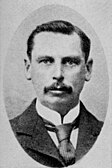| This article needs additional citations for verification. Please help improve this article by adding citations to reliable sources. Unsourced material may be challenged and removed. Find sources: "1920 South African general election" – news · newspapers · books · scholar · JSTOR (December 2009) (Learn how and when to remove this message) |
| |||||||||||||||||||||||||||||||||||||||||||||||||||||||||||||||||
All 134 seats in the House of Assembly 68 seats needed for a majority | |||||||||||||||||||||||||||||||||||||||||||||||||||||||||||||||||
|---|---|---|---|---|---|---|---|---|---|---|---|---|---|---|---|---|---|---|---|---|---|---|---|---|---|---|---|---|---|---|---|---|---|---|---|---|---|---|---|---|---|---|---|---|---|---|---|---|---|---|---|---|---|---|---|---|---|---|---|---|---|---|---|---|---|
| Registered | 421,790 | ||||||||||||||||||||||||||||||||||||||||||||||||||||||||||||||||
| Turnout | 66.94% ( | ||||||||||||||||||||||||||||||||||||||||||||||||||||||||||||||||
| |||||||||||||||||||||||||||||||||||||||||||||||||||||||||||||||||
 Results by province Results by province | |||||||||||||||||||||||||||||||||||||||||||||||||||||||||||||||||
| |||||||||||||||||||||||||||||||||||||||||||||||||||||||||||||||||
| This article is part of a series on the |
| Politics of South Africa |
|---|
 |
| Constitution |
| Executive |
| Legislature |
| Judiciary |
| Elections |
| Administrative divisions |
|
Foreign relations
|
| Related topics |
| Provincial politics |
|
|
General elections were held in South Africa on 10 March 1920 to elect the 134 members of the House of Assembly. This was for the third Union Parliament.
The National Party (NP) won the largest number of seats, but not a majority. The South African Party (SAP) minority government continued in office, with Unionist Party support in Parliament. This was the third successive term of SAP government, but only the second period with General Jan Smuts as Prime Minister. The first SAP premier (General Louis Botha) had died in office in 1919, during the previous Parliament.
The National Party became the official opposition for the first time.
Delimitation of electoral divisions
The South Africa Act 1909 had provided for a delimitation commission to define the boundaries for each electoral division. The representation by province, under the third delimitation report of 1919, is set out in the table below. The figures in brackets are the number of electoral divisions in the previous (1913) delimitation. If there is no figure in brackets then the number was unchanged.
| Provinces | Cape | Natal | Orange Free State | Transvaal | Total |
|---|---|---|---|---|---|
| Divisions | 51 | 17 | 17 | 49 (45) | 134 (130) |
Results
The vote totals in the table below may not give a complete picture of the balance of political opinion, because of unopposed elections (where no votes were cast) and because contested seats may not have been fought by a candidate from all major parties.
 | |||||
|---|---|---|---|---|---|
| Party | Votes | % | Seats | +/– | |
| South African Party | 101,227 | 36.48 | 41 | –13 | |
| National Party | 90,512 | 32.62 | 43 | +16 | |
| Labour Party | 40,639 | 14.65 | 21 | +17 | |
| Unionist Party | 38,946 | 14.03 | 25 | –14 | |
| Socialist League | 202 | 0.07 | 0 | 0 | |
| Independent | 5,968 | 2.15 | 3 | –3 | |
| Vacant | 1 | – | |||
| Total | 277,494 | 100.00 | 134 | +4 | |
| Valid votes | 277,494 | 98.28 | |||
| Invalid/blank votes | 4,867 | 1.72 | |||
| Total votes | 282,361 | 100.00 | |||
| Registered voters/turnout | 421,790 | 66.94 | |||
| Source: Potgieter | |||||
References
- South Africa 1982: Official Yearbook of the Republic of South Africa, published by Chris van Rensburg Publications
- "The South African General Election was held on March 10th". The Spectator. London. 20 March 1920. Retrieved 21 February 2016.
- South Africa 1982, page 129
- Dirk J. Potgieter (1971) Standard Encyclopaedia of Southern Africa, Volume 4, p. 272
| General elections | |
|---|---|
| Provincial elections | |
| Municipal elections | |
| Referendums | |



